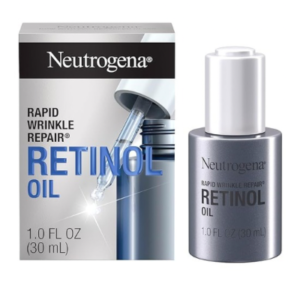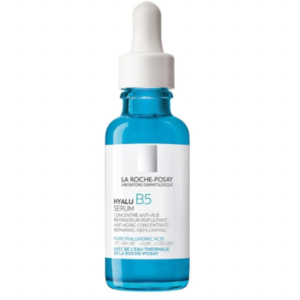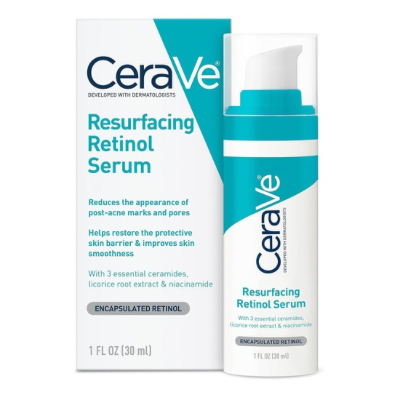
When I first started my skincare journey, I struggled with dry, lackluster skin. No matter how many moisturizers I tried, nothing seemed to provide the hydration I needed. Then, I discovered two game-changing ingredients—Hyaluronic Acid and Retinol—that completely transformed my skincare routine. Since then, my skin has never looked better, and I want to share these secrets with you so you can unlock radiant, youthful skin too.
*As an Amazon Associate, I earn from qualifying purchases. This means I may earn a small commission if you purchase products through my affiliate links at no extra cost to you.*
Choosing between Hyaluronic Acid and Retinol can be overwhelming. Both have incredible benefits, but understanding how each works will help you decide which is right for you. Let’s dive into the details so you can make the most of these ingredients in your daily skincare routine.
What is Hyaluronic Acid?
Hyaluronic Acid (HA) is a powerhouse hydrating ingredient that naturally occurs in the skin. It has the ability to attract and retain moisture, making it perfect for keeping your skin hydrated, plump, and smooth. It works by pulling water into the skin, giving you that healthy, glowing complexion.
Benefits of Hyaluronic Acid:
- Deep hydration to keep skin smooth and plump.
- Reduces fine lines by maintaining moisture levels.
- Boosts radiance for a glowing complexion.
- Suitable for all skin types, including sensitive skin.
Pro Tip: If you want maximum hydration, apply Hyaluronic Acid on damp skin, followed by a moisturizer to lock in the moisture.
What is Retinol?
Retinol, a form of Vitamin A, is one of the most effective ingredients for fighting signs of aging and uneven skin texture. It works by stimulating collagen production, promoting cell turnover, and helping to reduce the appearance of fine lines, wrinkles, and dark spots. Retinol can also help keep acne at bay by keeping pores clear.
Benefits of Retinol:
- Anti-aging benefits by reducing fine lines and wrinkles.
- Promotes cell turnover for fresher, smoother skin.
- Improves skin texture, brightens skin tone, and diminishes dark spots.
- Treats acne by clearing pores and preventing breakouts.
Pro Tip: Start slowly with Retinol. Begin using it 2-3 times per week and gradually increase the frequency as your skin builds tolerance.
Hyaluronic Acid vs. Retinol: Key Differences
Hyaluronic Acid and Retinol are two powerful skincare ingredients, each offering unique benefits. Hyaluronic Acid is known for its ability to deeply hydrate the skin by attracting and retaining moisture, making it ideal for dry, sensitive, or dehydrated skin. It helps plump the skin, reduce the appearance of fine lines, and soothe irritation. On the other hand, Retinol, a form of Vitamin A, accelerates skin cell turnover, helping to address concerns like wrinkles, acne, and uneven skin tone. It smooths the skin’s texture and fades pigmentation but can cause dryness or irritation, especially when first introduced into a skincare routine.
While both ingredients are effective on their own, they work best when used together. Retinol is typically used at night due to its potential to make the skin more sensitive to sunlight, while Hyaluronic Acid can be used both morning and night to keep the skin hydrated and counterbalance any dryness caused by Retinol. Combining these two ingredients offers the perfect balance of anti-aging and hydration, resulting in smoother, more youthful skin that’s both refreshed and nourished.
Best Practices for Introducing Retinol to Your Routine
Retinol is a powerful ingredient, but it can also be quite potent, especially for those new to it. Here’s how you can ease into using Retinol without irritating your skin:
- Start Slowly: Begin by applying Retinol just 2-3 times a week, and increase the frequency as your skin gets used to it. Over time, you can use it nightly for the best results.
- Use It at Night: Retinol can make your skin more sensitive to the sun, so it’s important to apply it at night after cleansing. Follow it with a moisturizer to lock in hydration.
- Be Gentle: When starting out, your skin may experience some dryness or peeling. Avoid using other harsh ingredients like exfoliants or Vitamin C when applying Retinol to prevent irritation.
- Pair with Hydrating Ingredients: To avoid excessive dryness, layer Retinol with hydrating products like Hyaluronic Acid. This will keep your skin moisturized and plump while Retinol does its magic.
Top Hyaluronic Acid & Retinol Products You Should Try
If you’re wondering which products will help you experience the benefits of Hyaluronic Acid and Retinol, I’ve compiled a list of top products that deliver visible results.
The Ordinary Hyaluronic Acid 2% + B5

The Ordinary is known for its affordable yet powerful skincare products. The Hyaluronic Acid 2% + B5 serum is a fan favorite, offering deep hydration and smooth skin at an unbeatable price.
Key Benefits:
- Deep hydration for plump, smooth skin.
- Soothes and heals with Vitamin B5.
- Improves skin elasticity and bounce.
- Suitable for all skin types, including sensitive.
Neutrogena Rapid Wrinkle Repair Retinol Oil

If you’re looking for a highly effective Retinol product, Neutrogena’s Rapid Wrinkle Repair Retinol Oil is a standout. It works quickly to reduce the appearance of wrinkles and fine lines, while also providing moisture.
Key Benefits:
- Reduces fine lines and wrinkles fast.
- Hydrates while treating signs of aging.
- Non-comedogenic, won’t clog pores.
- Ideal for oily and acne-prone skin.
La Roche-Posay Hyalu B5 Pure Hyaluronic Acid Serum

La Roche-Posay is renowned for its gentle, effective formulas. The Hyalu B5 Serum combines Hyaluronic Acid with Vitamin B5 to hydrate and restore skin’s natural barrier.
Key Benefits:
- Boosts hydration with two types of Hyaluronic Acid.
- Restores skin’s barrier with Vitamin B5.
- Brightens and evens skin tone.
- Gentle on sensitive skin.
CeraVe Resurfacing Retinol Serum

CeraVe Resurfacing Retinol Serum is a lightweight, fragrance-free formula designed to improve skin texture and tone. It helps fade the appearance of post-acne marks, refine pores, and promote a smoother, more even complexion.
Key Benefits:
- Reduces dark spots with gentle retinol.
- Strengthens the skin barrier with essential ceramides.
- Calms redness with soothing niacinamide.
- Hydrates skin with lightweight, non-greasy formula.
Can You Use Hyaluronic Acid and Retinol Together?
Yes! Hyaluronic Acid and Retinol can be used together in your skincare routine, but there’s an ideal order of application for the best results.
Layering Tips:
- Step 1: Start with clean skin, applying Retinol first. Since Retinol can be drying, let it absorb for a few minutes before applying other products.
- Step 2: Apply Hyaluronic Acid after Retinol to hydrate and lock in moisture. This will help prevent dryness and irritation that Retinol may cause.
Pro Tip: Always use SPF in the morning when using Retinol at night. Retinol can make your skin more sensitive to the sun, so sunscreen is a must.
Additional Ingredients to Pair with Retinol and Hyaluronic Acid
To supercharge your skincare routine, consider adding other key ingredients that work harmoniously with Hyaluronic Acid and Retinol:
- Niacinamide: This anti-inflammatory ingredient can help soothe your skin, making it a perfect partner with Retinol to reduce redness or irritation. It also helps to minimize pores and brighten skin.
- Vitamin C: If you’re using Hyaluronic Acid in the morning, Vitamin C can be a great addition to brighten your complexion and protect your skin from environmental stressors. Just be sure to apply it before sunscreen.
- Peptides: These are great for improving skin elasticity. They work well with both Hyaluronic Acid and Retinol, especially when you’re looking to support skin barrier function while promotingb go firmness and smoothness.
Frequently Asked Questions (FAQs)
Q1: What is better for anti-aging: Hyaluronic Acid or Retinol?
A: Both are excellent, but Retinol is especially known for reducing fine lines and wrinkles, making it the top choice for anti-aging. Hyaluronic Acid hydrates and plumps, helping to smooth fine lines caused by dehydration.
Q2: Can Hyaluronic Acid and Retinol cause irritation?
A: Hyaluronic Acid is gentle for most skin types, but Retinol can cause irritation, especially for those new to it. Start with a lower concentration of Retinol and build up gradually, while applying Hyaluronic Acid after to keep your skin hydrated.
Q3: How long does it take to see results from Retinol and Hyaluronic Acid?
A: Retinol can take 4-6 weeks to show visible results, improving texture and reducing wrinkles. Hyaluronic Acid gives instant hydration, making your skin look more plump and radiant right away.
Q4: Can I use Hyaluronic Acid and Retinol every day?
A: Hyaluronic Acid can be used daily, even twice a day. Retinol should be used 2-3 times a week initially, then gradually increased as your skin gets used to it.
Conclusion
Both Hyaluronic Acid and Retinol offer incredible benefits—hydration, smoothness, and anti-aging properties. By understanding their unique powers, you can incorporate them into your routine for healthier, more youthful skin. Just remember: Always wear SPF when using Retinol to protect your skin from sun damage.
Now that you know how Hyaluronic Acid and Retinol can transform your skincare routine, share this guide with your friends and family who need a skincare upgrade! Let them discover the power of these ingredients and unlock youthful, glowing skin!
My Other Blogs:
Best Hyaluronic Acid Serums for Ultimate Skin Glow
Top 10 Retinol Serums for Youthful Skin: Your Ultimate Guide
Glowing Skin Made Easy: The Top 5 Serums You Need for Instant Radiance
